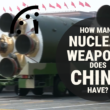Standards properly applied
By Christopher A. Ford, November 5, 2012
Ever since the first public revelations of Iran’s nuclear program in 2002, the International Atomic Energy Agency (IAEA) has struggled to verify and document Iran’s degree of compliance with a range of legal obligations. Iran and its defenders have periodically contested the legal standards applied to Tehran, but these criticisms have so far been tendentious and insupportable.
The first challenge for IAEA investigators was to verify compliance with Iran’s Comprehensive Safeguards Agreement (CSA), which, it quickly became clear, Iran had repeatedly violated — for example, by secretly importing uranium and experimenting with uranium conversion, plutonium separation, and laser enrichment. The information gathered by the IAEA — and the data provided by Iran under additional promises of transparency — formed the basis of the agency’s 2004 findings that Iran had breached its safeguards agreement in reporting the possession, processing, and use of nuclear material, and declaring facilities where such material was processed and stored. The agency’s report was painstakingly documented and amply justified. In fact, it is worth mentioning that if the IAEA were guilty of any legal fault at this point, it was in its refusal to follow its own statute for nearly two years in order to protect Iran from UN Security Council sanctions. Pursuant to the IAEA statute, if noncompliance is found, the Board of Governors shall report it to the Security Council; this was not done, however, until 2006.
In February 2003, less than a year after the program was widely revealed, Iran agreed to a modification of Code 3.1 of the Subsidiary Arrangements, which provide amplifying detail for safeguards procedures and obligations under its CSA. Because the original requirements for providing design information about new facilities left too little time for proper safeguards to be established, the IAEA had long been trying to obtain agreement on this particular adjustment. In March 2007, however, the Iranians announced that they were “suspending” this modification.
Iran maintains that it had the right to suspend the modified provision because it had not been ratified by parliament; however, Iran’s CSA, which was ratified by parliament, specifies that Subsidiary Arrangements are to be created or modified only “by agreement” between Iran and the IAEA — that is, not unilaterally (Article 39). Were Iran’s position correct, the entire IAEA safeguards edifice would fall apart, for most of the operational details of all safeguards measures everywhere are provided by Subsidiary Arrangements, rather than in the actual Comprehensive Safeguards Agreements. If compliance with the Subsidiary Arrangements were optional, governments could modify IAEA safeguards procedures at nuclear facilities at their whim, making nuclear accountability impossible.
Fortunately, Iran’s position is incorrect. The text and structure of Iran’s CSA make clear that Subsidiary Arrangements are intended to be legally binding, for they are integral to the coherence of the safeguards mechanism the agreement establishes. There are numerous points at which the agreement states that parties must follow the detailed procedures established by the Subsidiary Arrangements (e.g., Articles 32, 42, 51, 65, 68, 75, 76, and 90). The Comprehensive Safeguards Agreement — which requires the creation of Subsidiary Arrangements, provides a mechanism for their establishment, and obliges parties to follow their provisions — refers to the arrangements for a whole host of matters that were clearly not intended to be left to the caprice of the host government. In fact, in Article 60, the CSA even authorizes the Subsidiary Arrangements to supersede the provisions of the CSA itself. If the arrangements were not binding, and were not modifiable only by agreement, the CSA’s structure and text would be inexplicable and incoherent.
The IAEA is thus correct in continuing to apply the modified Subsidiary Arrangements to Iran — and each time Iran refuses to provide timely information, it is another safeguards violation. The Security Council has also acted under Chapter VII of the UN Charter to require that Iran comply with the arrangements; Iran’s refusals constitute violations of this charter.
In addition to safeguards, the IAEA must verify Iran’s compliance with its agreements and obligations to suspend various aspects of its nuclear program. The agency’s role in verifying suspension began with Iran’s promise in October 2003 — as part of an agreement Tehran made with Britain, Germany, and France — to suspend all enrichment and reprocessing activities. In December 2003, Iran agreed to sign the Additional Protocol, a safeguards standard established in the 1990s in order to give the IAEA more investigative tools to fulfill its responsibility for verifying the absence of undeclared nuclear activities and the correctness and completeness of declarations. This IAEA responsibility stems from the CSA, which gives the agency the “right and the obligation” to ensure that safeguards are applied to “all” relevant nuclear material in peaceful activities in Iran: This necessarily implies the right to look into the possibility that some material or activities haven’t been declared, and to assess the veracity of declarations.
Iran subsequently repudiated the protocol, but in multiple Chapter VII resolutions, the Security Council has imposed further obligations upon Iran: to take steps demanded by the IAEA Board of Governors to clarify outstanding issues, to suspend enrichment-related and reprocessing activities, to stop construction of a heavy water reactor, to ratify — and, pending ratification, comply with — the Additional Protocol, and to give the IAEA more access to information than even specified by the protocol. The agency has been tasked with verifying compliance and Iran has been required to cooperate with the IAEA, so this constitutes another set of IAEA legal authorities and standards to apply vis-à-vis Iran. So far, there is no evidence that these standards have been improperly applied.
Topics: Nuclear Weapons
Share: [addthis tool="addthis_inline_share_toolbox"]














